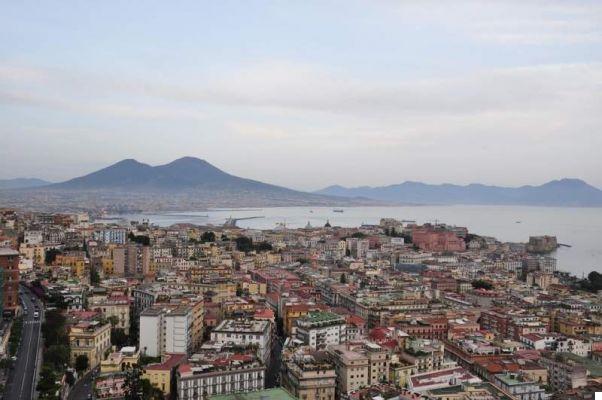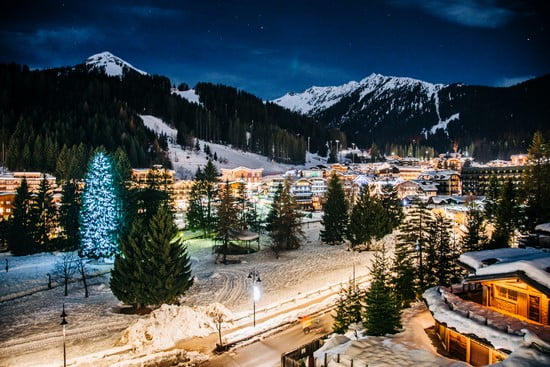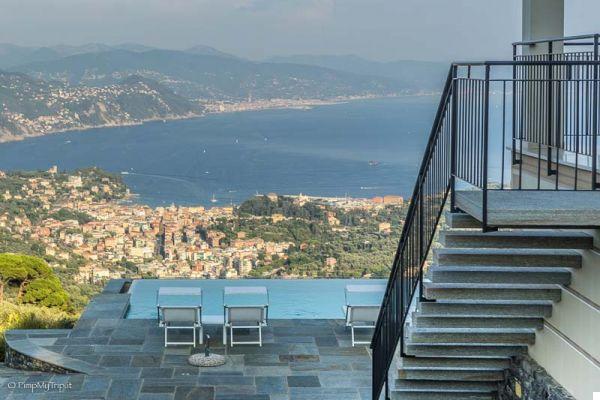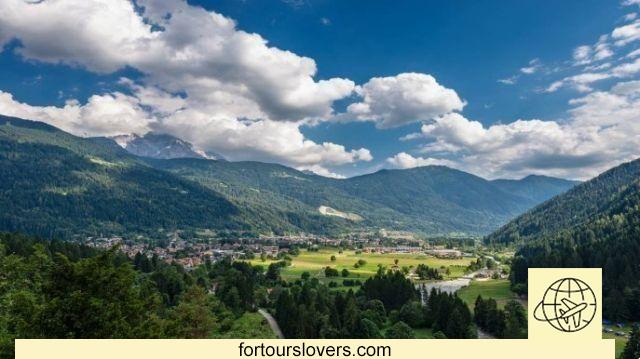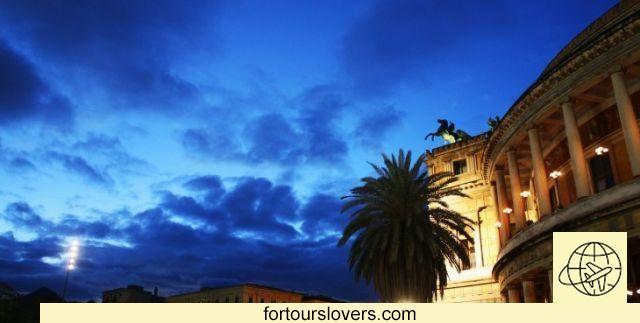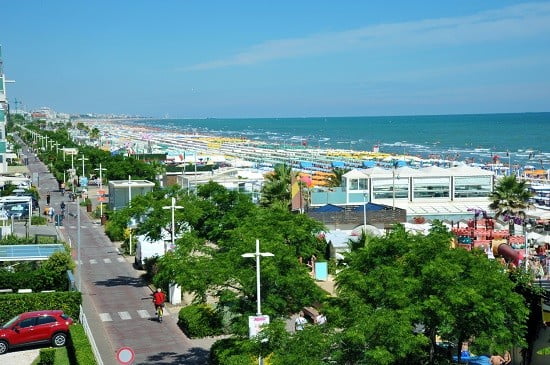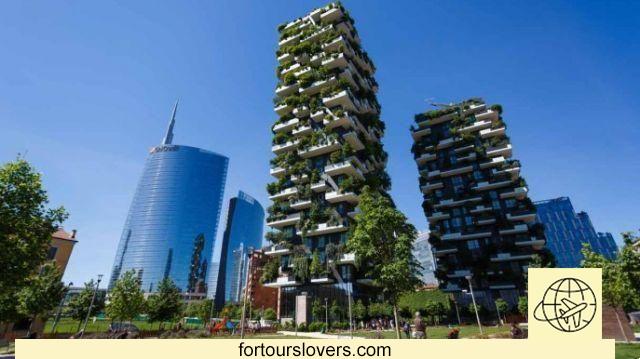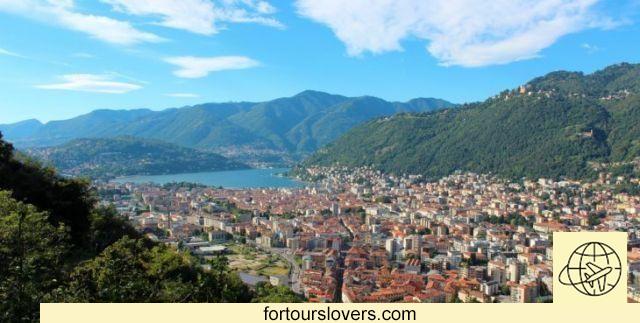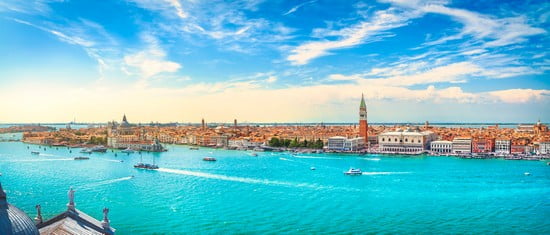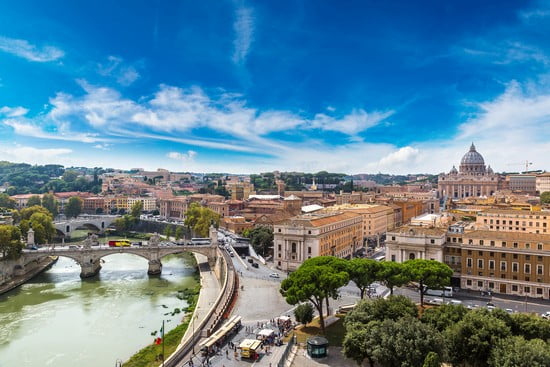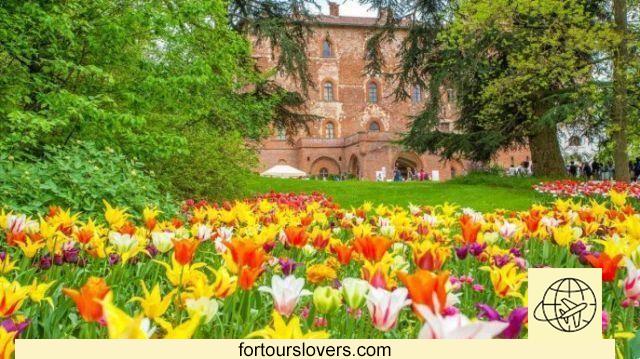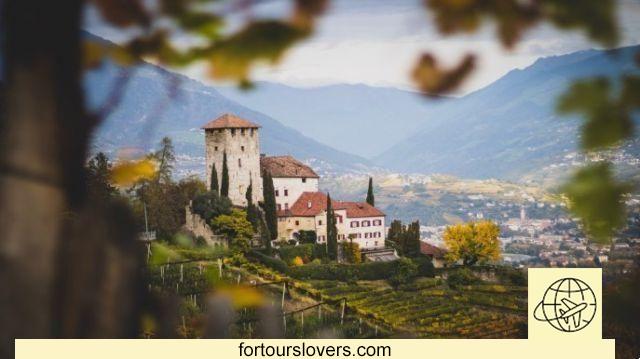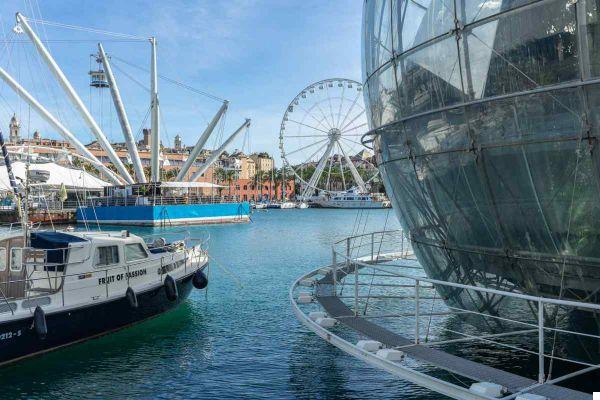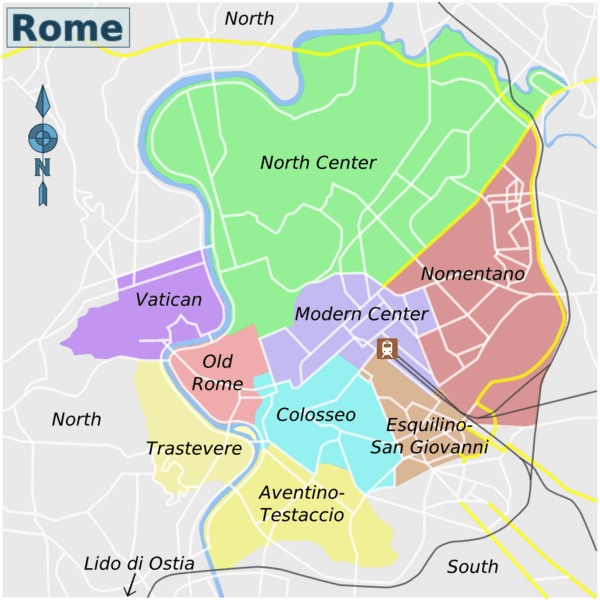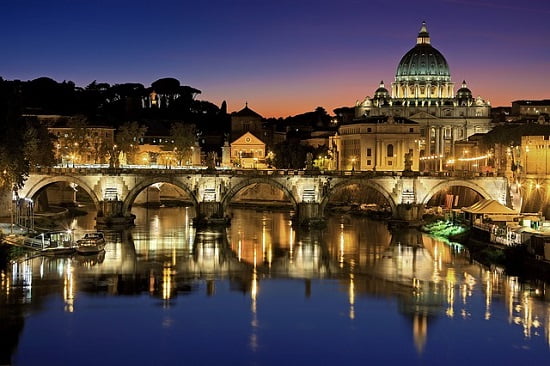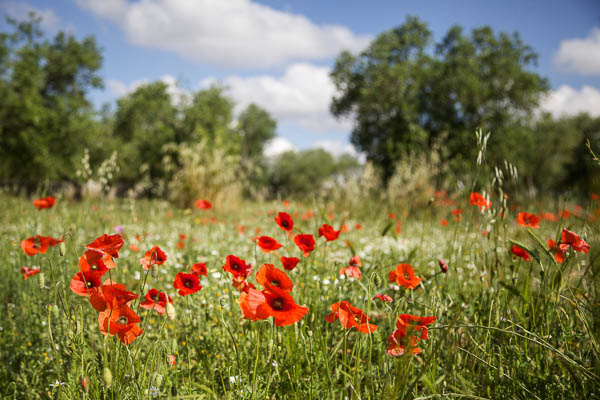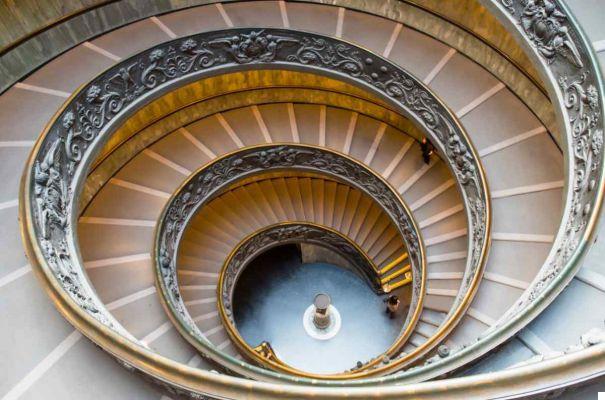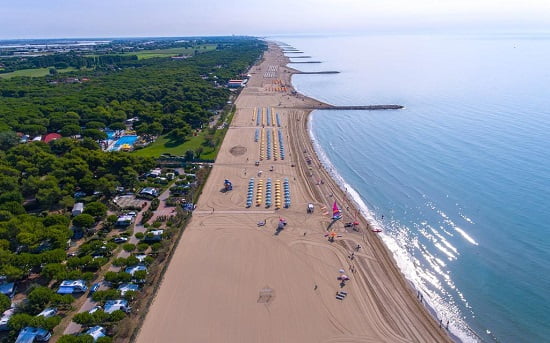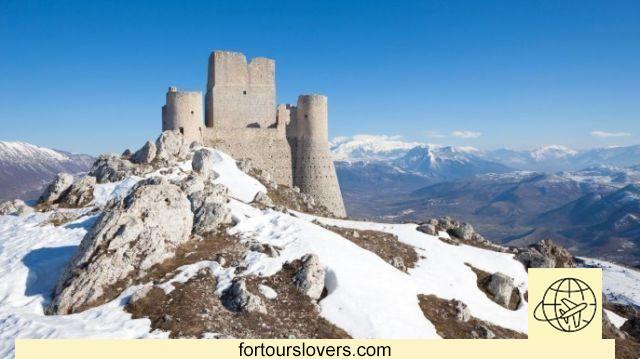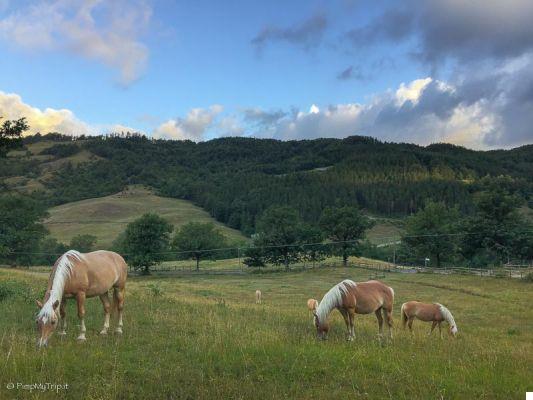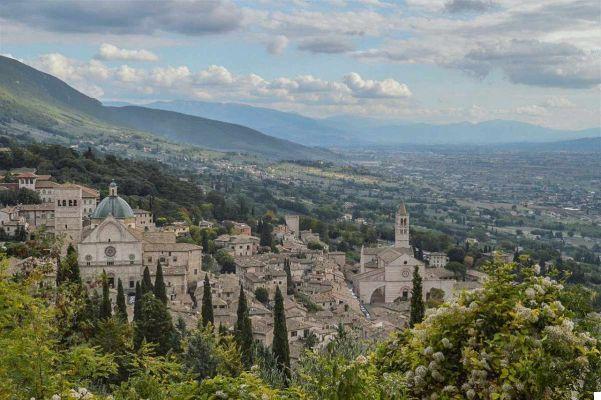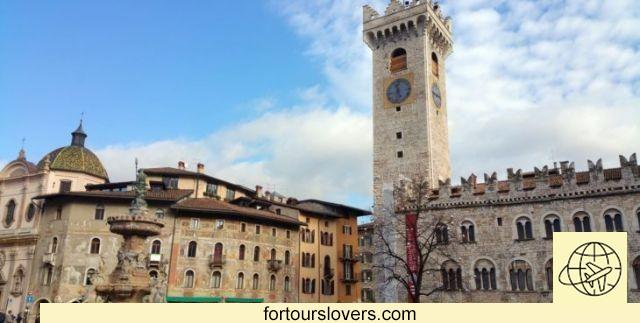
Trento
11 things to do and see in Trento and 1 not to doTelling Trento is not easy. There is an evident disproportion between the overall reduced territorial extension and the very important historical role that, instead, the city has exercised over the centuries. It is necessary to start fromRoman heritage, whose traces can be found in theurban planning of the center and in the same toponym Trento, derivation of the Latin Tridentum. Then there is the role played by Church, both in the consolidation oflocal autonomy that, above all, in dictating the precepts of catholic doctrine against the challenges of Protestantism (Council of Trent). Still, theantagonismo which went through the entire 800 between supporters of the Italian spirit e loyal to the Austro-Hungarian Empire to arrive, finally, at the price paid by the city during the two world wars. But it is not over because in the story of Trento the spectacle of the mountains all around cannot be missing, an ideal solution for lovers of trekking and winter sports. In short, a beautiful city full of charm whose main attractions we will later discover together. Happy reading.
1 Piazza del Duomo
Piazza del Duomo is the obligatory starting point for a visit to Trento. Not only because it is its main attraction, but also because the most important streets of the city flow into it. In short, be it point of interest and road junction according to a scheme borrowed from the Roman urban tradition and consolidated during the Middle Ages. In addition to Cathedral of San Vigilio, which we will discuss in the next point, Piazza del Duomo hosts other buildings of great historical and cultural interest. In particular, they deserve Cazuffi Palace e Rella Palace, two adjacent buildings whose peculiarity consists in the decoration of their respective facades. It's not over, because they are always in the area Praetorian Palace and Civic Tower. The first is home to the Diocesan Museum of Tridentine which houses documents, artifacts and works of art of inestimable value, while the Civic Tower is a medieval military structure (it was also used as a prison) from the top of which artillery shots and fireworks were fired during the holidays of the Council and the passage of great personalities. Finally, woe to forget the Neptune Fountain right in the center of the square. According to some historical sources, the location of the statue, depicting the Roman god holding a trident, is related to the ancient name of the city Tridentum.
2 Cathedral of San Vigilio
Dating back to the twelfth century, the Trento Cathedral it was built on a pre-existing one Paleo-Christian basilica whose remains are still visible in the crypt of the building. The church, a three naves and Latin cross, is entitled to patron saint San Vigilio, whose remains are kept inside, next to those of Saints Sisinio, Martirio and Alessandro. Especially striking is the mixture of architectural styles: Gothic, Romanesque, Renaissance and Baroque each tell a specific historical phase of the cathedral, famous for having hosted the works of the Council of Trent. In memory of the event, the Chapel of the Crucifix built in the southern part of the church. With a square plan and surmounted by a dome, this chapel houses the wooden crucifix in front of which those conciliar decrees fundamental for the development of Catholic doctrine from the 600s onwards were proclaimed. Discounted, then visit the Cathedral of San Vigilio in combination with the Diocesan Museum of Tridentine which we will discuss more fully in the next point. For more information on the Cathedral of San Vigilio consult the place: www.cattedralesanvigilio.it.
3 Diocesan Museum of Tridentine
The visit of the Cathedral of Trento and that of Palazzo Pretorio go together for several reasons: first of all, because Praetorian Palace was theancient bishop's residence, before this was transferred in 1255 to the Buonconsiglio Castle. Secondly, because since 1963 (IV centenary of the Council of Trent) the Tridentine Diocesan Museum has been moved to this new location, putting an end to long years during which the main concern was rather to preserve the integrity of the works from madness Of the war. Third reason, because the finds of the early Christian basilica under the crypt of the Cathedral depend on the museum in question. That said, what matters most is theenormous historical value of canvasses, paintings, vestments and other finds that in large part shed light on a fundamental event such as the Council of Trent. A historical fact whose importance goes beyond the religious aspect and directly affects the way of feeling, thinking and interpreting the lives of millions of people without these, in many cases, being fully aware of it. For more information on history, works, exhibitions, collections and visiting methods, consult the Official site: www.museodiocesanotridentino.it.
4 Archaeological area of Sas
From Piazza del Duomo to Piazza Cesare Battisti or, put it another way, from the medieval to the Roman city. It is already, because under Piazza Cesare Battisti, during the restoration and expansion of the Teatro Sociale, significant remains of the ancient Tridentum. To be precise: a long stretch of eastern walls; parts of a tower; a segment of a minor decumanus; ducts of the sewerage network and various other finds all cataloged and arranged according to the most modern display solutions. The area is called Archaeological Underground Space of the Sas (from the name of the ancient district partially razed to the ground to make room for the new square) and can be visited every day, except Mondays, from 9 to 13 and from 14 to 17.30 (from 1 June to 30 September until 18). The visit, which also uses multimedia, is suitable for children. More information at place: www.cultura.trentino.it.
5 Monument to Dante
Italy is full of celebrations for the Florentine poet. That of Trento, however, has a different meaning, since it crosses two fundamental issues related to each other: the bilingualism of the region (trilingualism, considering Ladin) and the heated dialectic between the supporters of the Italian character of the territory and the faithful of the Austro-Hungarian Empire. In fact, it was one of the most famous irredentists of Trento who wanted the Monument to Dante Guglielmo Ranzi. The idea followed the foundation, in 1886, of the “Pro Patria” society whose aim was to promote the establishment of Italian schools within the borders of the Austro-Hungarian Empire. Ranzi, however, had to wait 10 years to see his dream come true, becoming himself the promoter, together with others, of the fundraising necessary for the creation of the sculpture. The work, built by the Florentine artist Cesare Zocchi, was inaugurated on 11 October 1896. The sculpture, which depicts Dante with his right arm outstretched towards the Alps, rests on an imposing base in which various characters from the Divine Comedy are sculpted. There are also many on the pedestal epigraphy, including one dictated by Ranzi himself and very revealing of the feelings that inspired the work: “Let us bow Italians. Bow down Strangers. Deh! Let us stand up again in justice “.
6 Church of Santa Maria Maggiore
Trento boasts a high level church heritage which, in addition to shedding light on the history of the city, contributes considerably to its tourist fortunes. Together with the Cathedral of San Vigilio it is worth visiting the Church of Santa Maria Maggiore, just three hundred meters away from the first. This church deserves above all for two reasons: for the Archaeological excavations which made it possible to acquire new information onevolution of the city from antiquity to the Middle Ages; and, secondly, for the role it had on the occasion of the Council of Trent. Compared to the first point, it emerged that the church was built on a thermal plant built by the Romans, and that over the centuries it has undergone several renovations that have progressively decreased its square. What we admire today is the result of the "vision" of Prince Bishop Bernardo Clesio which impressed not only the building, but a large part of the city (including Palazzo Magno, see next point) a Renaissance turn, which went down in history as "Clesian style". As for the Council, however, it stopped at the Church of Santa Maria Maggiore on the occasion of the solemn procession for the opening of the works and during the concluding congregations of 1562. To facilitate the carrying out of the final works, a wooden tribune was set up in the only nave of the church reported in several paintings, including the most famous of Elia Naurizio kept in the Tridentine Diocesan Museum. Other noteworthy paintings are those that decorate the vault of the church, made in the early 900s by Sigismondo Nardi always as evidence of the conciliar work. To be seen!
7 Buonconsiglio Castle
At the beginning we mentioned the role of the Church in consolidating local autonomy. The reference was to Episcopal Principality of Trento, a parastate entity governed by the city bishop (who thus combined religious and secular power) in a complicated intertwining of relations with the Holy Roman Empire. An institution that has governed the fate of the city for centuries and which, after a first phase at Palazzo Pretorio, has always had in Buonconsiglio Castle its official headquarters. In reality, what we call Castello del Buonconsiglio is the sum of adjacent buildings built over the centuries. The oldest core is Castelvecchio, famous above all for the courtyard with superimposed arcades and for the Venetian loggia from which the main monuments of the city can be seen. Adjacent to Castelvecchio there is Eagle Tower whose popularity is due to "Cycle of the Months", series of wall frescoes made by tal Master Wenceslas and by art historians considered as one of the most precious testimonies of the economic and social life of the city at the turn of the '300 and' 400. Great Palace (or Palazzo Magno), on the other hand, is the emblem of Trentino Renaissance, While the Giunta Albertiana represents the baroque season. It must be said that Buonconsiglio's history does not end with the end of the temporal power of the bishops. To say, the Castle was the scene of the death of the Italian irredentist Cesare Battisti, hanged in 1916 by the Austrians who had elected what for centuries had been the residence of the bishops of Trento as a military court. Briefly said about history, let's get to the news: today the Castello del Buonconsiglio in Trento is the main pole of a museum system consisting of 5 castles in Trentino Alto Adige (the other 4 are: Stenico, Beseno, Thun and Caldes). For more information see the place: www.buonconsiglio.it.
8 Muses
Opened in the 2013, the Trento Science Museum it is about one kilometer from Piazza del Duomo. A little more than ten minutes to arrive in front of this futuristic building designed byItalian architect Renzo Piano. The exhibition itinerary develops on several levels: from the "Tropical Greenhouse" in the basement where many fossil finds are exhibited, to the "Alte Vette" on the fourth floor where the conditions and forms of life of the Alpine glaciers are illustrated. All according to an ascending logic that uses the metaphor of the mountain to tell the evolution of life on earth, and more specifically the evolution of life in the Alps. Obviously there is no lack of naturalistic and scientific collections, as well as ad hoc didactic paths for the little ones who have the opportunity to learn while having fun. In short, an ultramodern museum that enriches the tourist and cultural offer of Trento, and which therefore constitutes an unmissable stop on a visit to the city. For more information consult the place: www.muse.it.
9 Monte Bondone and Valle dei Laghi
So far we have mainly dealt with the "city of the Council". A treasure trove of art, history and culture that deserves to be visited far and wide. But Trento is also something else. It is enough to look at the mountain ranges that surround it to realize it. Less than 20 kilometers there are both Reserve of the Three Peaks of Monte Bondone that the Valley of the Lakes. We are talking about territories of great naturalistic interest where it is possible to practice almost all types of outdoor activities: alpine skiing, cross country skiing, trekking, climbing, mountain biking, canoeing, sailing, kayaking, paragliding etc.. All this, ça va sans dire, with the utmost respect for the specificities of flora and fauna present. In short, a corner of wild nature within walking distance of the city where, if desired, you can also choose to stay. Special mention for the Toblino lake (see photo). Unlike the other alpine lakes in the valley, in fact, the Toblino has a particularly interesting vegetation, in some sections with tones similar to the Mediterranean scrub. Eye also to Castle on the north shore of the lake. It is a defensive fortress wanted by Prince Bishop Bernardo Clesio, so far in the article crossed over several times. To be seen!
10 The Trento Christmas Markets
For years now, in the period from the Immaculate Conception to the Epiphany, Trento has been sold out. In the city, the Christmas atmosphere is truly magical. The exhibitors, with their typical wooden houses, arrange themselves in Piazza Fiera, Piazza Cesare Battisti, Piazza Santa Maria Maggiore to sell their typical products. And that they are really such there is no doubt. Unlike other places where what is not passed off as typical, in Trento - but the discussion can be extended to the whole region - food and wine, ceramics, souvenirs and so on are strictly produced on site. Therefore, coming on holiday to Trento during the Christmas holidays is undoubtedly among the things to do. You will have the opportunity to taste delicacies such as Puzzone di Moena, DOP cheese from Val di Fiemme, Mulled wine and many other provincial and regional dishes. And that the Christmas Market in Trento is now a brand to all intents and purposes, this is also demonstrated by the dedicated site to which we refer for further details on the case: www.mercatinodinatale.tn.it.
11 The surroundings of Trento
In addition to Mount Bodone and the Valle dei Laghi (see point 8), Trento is surrounded by other beautiful places. Above all, of course, Madonna di Campiglio about 70 kilometers away. About fifty kilometers, however, there are Pinzolo, the villages of Val di Fiemme and those of the Val di Fassa. Finally, particular mention for Rovereto just over twenty kilometers away (about half an hour by car). The city, in fact, hosts the MART (Museum of modern and contemporary art of Trento and Rovereto) one of the most important museums in Europe, which can be visited alone or, why not, in combination with the MUSE we mentioned earlier. As for the many other things to do and see, we refer to our previous article on the Dolomites. Happy reading.
1 Do not violate the rules of civil coexistence
In the rankings of Italian cities with the highest quality of life, Trento invariably ranks in the very first places. It is therefore difficult to say what to avoid in a city where (almost) everything works perfectly. If anything, we must consider the active contribution of citizenship in maintaining high standards of livability. Therefore the only thing not to do in Trento is to violate the rules of civil coexistence that mark the daily life of the territory. Just to name a few: respect for the queue, purchase of the ticket on public transport, care of public green both the urban one and, above all, that of the surrounding mountains. For the rest, have a good holiday and long live Trento.




